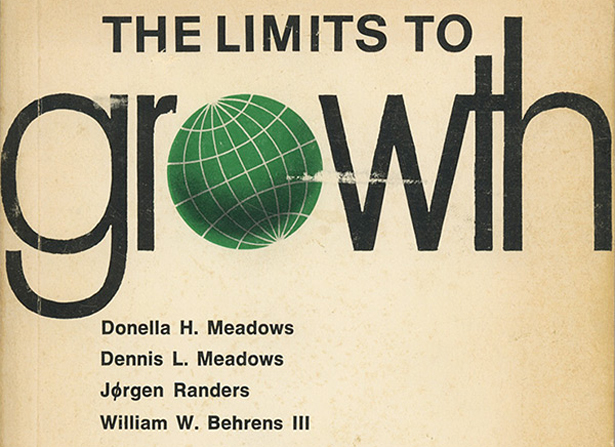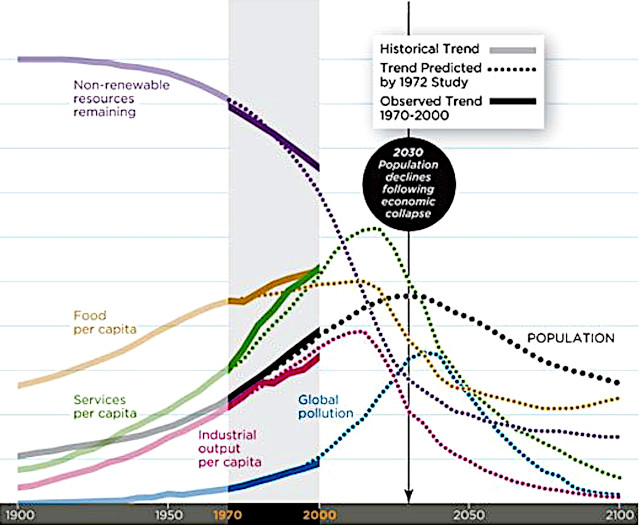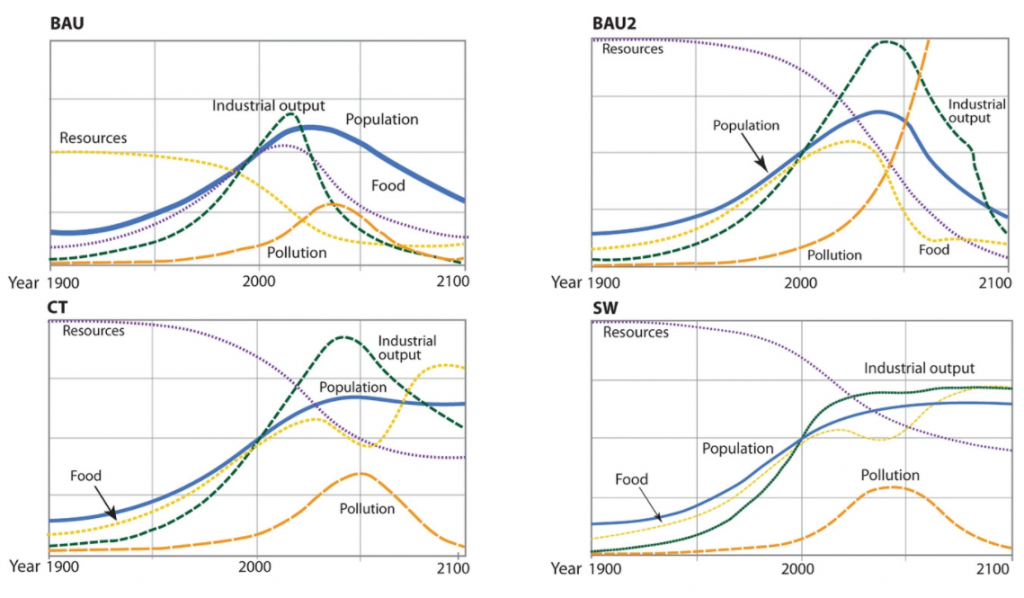The fable of unlimited growth.

In 1972, Don McLean’s American Pie was number one on the American billboard, the Olympic Games were inaugurated in Sapporo (Japan), Republican President Richard Nixon was re-elected, and the great oil crisis began to take shape.
The Club of Rome commissioned a report from a working group of MIT researchers initially called “The Limits of Growth” in between these events. The idea was to anticipate the significant risks we would face as a civilization in the next century to improve the world’s long-term future interdisciplinary and holistic.
Then, as an objective, we set out to build a computer simulation model called World3 to reproduce the consequences of the interactions between the earth and human systems.
This model was trained with five main variables, world population, industrialization, pollution, food production, and exploitation of natural resources.
The starting point thesis attempted to explain that the dynamics of exponential growth (population and per capita product) are unsustainable on a limited planet.
The planet by nature and constitution sets limits to growth, with non-renewable natural resources, finite arable land extension, and the inability of the natural ecosystem to absorb the amount of pollution generated in the current industrial production systems.

The first conclusion reached was that collapse would occur around 2030. Recently, in 2020, the Head of Sustainability and Dynamic Systems Analysis at KPMG, Gaya Herrington, repeated the same simulation, this time taking into account ten variables: population, fertility rates, mortality rates, industrial production, food production, services, non-renewable resources, persistent pollution, human welfare, and ecological footprint.
At this time, including in the study the empirical data already known from 1972 to 2020 on the main factors that served as a reference in the original study of 72.

Concluding that the prediction of the original simulation is essentially correct in the sense that continued economic growth is unsustainable under the current production model.
Pointing out that if no significant changes are made in resource consumption, economic growth will peak and collapse at the same time around 2040. The deviation from the original study differs by only one decade, so the error is not very large considering the time reference from 1900 to 2100.
If it were feasible, it would be interesting to repeat the same simulation with a Google quantum computer, 10,000 variables, and a good processing neural network, perhaps the most interesting AI problem to solve in 2022, in a scenario of skyrocketing hyperinflation, an ongoing war, and a pressing economic crisis.

Beyond a specific date that predicts a possible collapse, or whether one simulation model or another is used, or a standard or quantum machine, four variables or 10,000, the vital thing you have to ask yourself is whether you agree based on the data that have been crossed and whether the approach itself makes sense.
If everything goes up and non-renewable resources go down drastically, there is a collapse, and the data trend up to 2020 corroborates that scenario.
Apart from the predictive models, it is straightforward to interpret the moves that the enormous fortunes are making; Bill Gates made a massive land purchase last year and became the largest private owner of farmland in the U.S. with land being the scarce key resource in the coming decades.
We are coming from a covid post period, where there has been a lack of critical resources within the economy for the first time since the second world war; apart from the global failure of the supply chain, all these conjectural circumstances do not cease to be forewarnings.
As for the solution, we all know it, the drastic one would be to completely change our way of consuming, understanding, according to the data on the table, that it is not viable or sustainable over time.
But the reality will not be like the previous solution, which could approach a utopia at this stage of development and global consumption. So instead, we will patch up what we can, and we have no choice but to build a circular economy; yes or yes, there is no other.
Regarding renewable resources, we will plant a pine tree for each one you produce, and we will generate a new plastic bottle for each one you throw away. Otherwise, it will be impossible to sustain this.
Regarding non-renewable resources, alternative materials will be designed, and new technologies will be developed to solve the problem but think of lithium as the critical mineral in this radical and accelerated change towards electric mobility. The key resource that replaces technologies based on polluting fossil fuel combustion.
What is the existing Lithium reserve? How many years can it last according to the demand forecast? How much will a Lithium battery pollute at the end of the product cycle? How will we recycle it?
We all have doubts; developing new technology brings progress, but it always has side effects associated with it, one problem will be solved, but new ones will appear.
Suppose these new problems follow the pattern described in the study of this article. We will always be in a feedback loop with the risk of collapse, developing new technologies to replace the previous ones. Some problems will be solved, but new ones will appear, assuming that these technologies are also based on finite resources.
Beyond any technology that is developed to solve these problems, the root problem is to think about how we can change our consumption habits, and the problem lies in the number of resources we consume.
Not in the technology used to produce that resource, there will be some more sustainable and others less, but that is how you have processed that resource to consume it. What underlies is the scarcity of the finite resource itself. That is the real problem.
The challenge of the new technologies will be to transform a non-renewable resource into a renewable one. Suppose it is already renewable, to think about how many product cycles I can recycle it. In that case, this must be the helpful technology of the future, everything else will not solve the root of the problem, and we will continue patching it up.

Vizologi is a revolutionary AI-generated business strategy tool that offers its users access to advanced features to create and refine start-up ideas quickly.
It generates limitless business ideas, gains insights on markets and competitors, and automates business plan creation.


